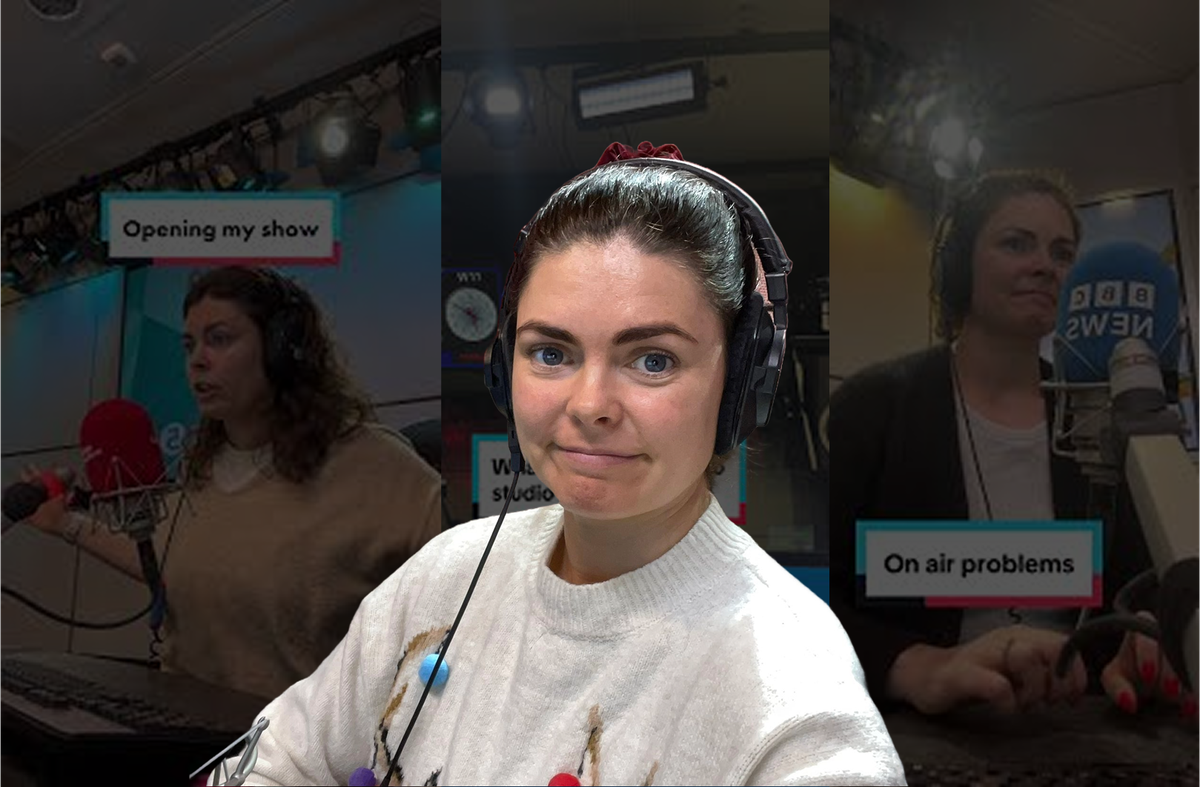What happens when journalism steps out from behind the curtain? In an exclusive interview with Yoof News, BBC Senior Business Presenter Leanna Byrne, and her more than 11,000 TikTok followers, offer a glimpse into a new TikTok niche: News reporter behind the scenes. The behind-the-scenes stories capture the essence of journalism in action, from the hustle of newsrooms to the pressures of live reporting.
When Byrne started creating content, her aim was not only to democratise journalism, but also to build trust by showing her branch of the BBC as a human-driven space with stories of its own. ‘I saw a lot of media outlets starting to show up on TikTok, like The Washington Post, and even some great journalists at BBC News doing it well. But no one was really covering business news or showing behind-the-scenes in Radio. So I thought, why not try that?’
Dispelling preconceptions about Radio
When Byrne films her ‘how to get ready for a 4am shift’ for a TikTok, she’s doing more than documenting her day, she’s offering an alternative to how newsrooms engage with audiences. Her videos range from explainers on the Russian economy to showing the intricacies of radio production. This candid approach demystifies journalism for viewers who may have never stepped inside a newsroom, as ‘many consume the news, but don't really know how things are made’ she says.
@lbizjournotok Just some things you need to do the night before #nighttimeroutine #journalist #radioproducer #radio
♬ original sound - Leanna | BBC Radio Journo
For Leanna, audiences care just as much about who is telling the story as they do about the story itself. ‘What people seem to get from it is a better understanding of how newsrooms actually work’. One of her most popular posts, which garnered close to a million views, shows her reacting to and handling breaking news within a program in real-time.
@lbizjournotok You can see the stress on my face #breakingnews #bbctheme #journotok #radio #producer
♬ B.B.C. News Theme - TV Theme Tune Factory
‘It helped people see what goes through a producer’s mind in those moments. I think that kind of transparency is important—it humanises journalism, lifting the lid and being a little bit more transparent.’ She adds ‘because the BBC is such a huge organisation, and maybe people just don't really realise that it’s human beings at the end of the day making those decisions. I think it's a nice way to let people in on the individuals who are doing really hard work here.’
This authentic approach is crucial to Byrne showcasing the reality of her work: ‘Another one of my videos that did well centred around the question ‘What happens before you just go on air?’ Because I think that's something people see in movies. They think there’s a producer behind a screen counting down, ‘Ten, nine, eight...’— when actually, that only happens on TV.’
Her TikTok channel has been instrumental in connecting with audiences on a more personal level. ‘My program doesn’t really have built-in audience interaction tools like WhatsApp or text consoles, so TikTok is actually my main way of connecting with people. The audience there also tends to be a lot younger than our usual viewers or listeners, which is great—it helps me see what they care about and what conversations they want to have’ she says.
Gen Z and Radio programs
Byrne’s TikTok strategy is particularly effective in reaching Gen Z. The BBC program she presents, Marketplace Morning Report, targets early-morning listeners in the U.S. ‘who tune in at 5 a.m. to catch up on overnight business news from Asia, Europe, and Africa’, struggling to attract ‘women and diverse backgrounds under 35’, but through TikTok Lives and engaging videos, she’s attracting audiences ‘often much younger than those who typically watch or listen to the programme’. She notes ‘I’ve actually had younger users say, ‘Hey, I’ve heard you on Marketplace,’ or ‘I listen to you on the BBC World Service.’ That’s always surprising, and really encouraging. During TikTok Lives, people often ask how they can tune in or listen back, so I’ll direct them to the live broadcast or recommend other BBC podcasts like the Global News Podcast. It’s amazing to see that some follow through. That kind of engagement just doesn’t happen through traditional platforms.’
In her choice of topics, Leanna has also created a highly intentional feedback loop. She adapts her topics to questions asked by her viewers and sometimes unpacks topics suggested by them. Her explainer videos addressing intergenerational wealth, housing difficulties, and rising living costs for instance resonate deeply with Gen Z. Byrne’s ability to address these issues directly, and authentically, has helped her foster trust among her audience.
So What?
Leanna Byrne’s TikTok presence is a call to rethink not just how journalism is distributed, but how it’s made. Transparency about process, decisions, tone, and even more day to day work becomes part of the storytelling itself.
Byrne’s success shows that shorter, informal formats don’t have to be a compromise, but can be seen as a an opportunity. Instead of dumbing things down, they allow journalists to distill complex topics, like the Russian economy or intergenerational wealth, into more accessible forms. A potent hook and short script doesn’t have to dilute the journalism. In the case of Leanna, it amplifies its reach, allowing programmes like Marketplace Morning Report, typically targeting U.S. listeners up at 5 a.m, to connect with a wider audience whether in terms of gender, age or geographic location.
Most of all, Byrne reminds us that younger audiences don’t just want the facts, they want to see how the facts come together. They want to understand the humans behind the headlines, the ethical decisions, and the messy, often invisible layers of newsroom life. Her approach offers an authenticity, built on access, accountability, and a willingness to show the scaffolding behind the finished story.


